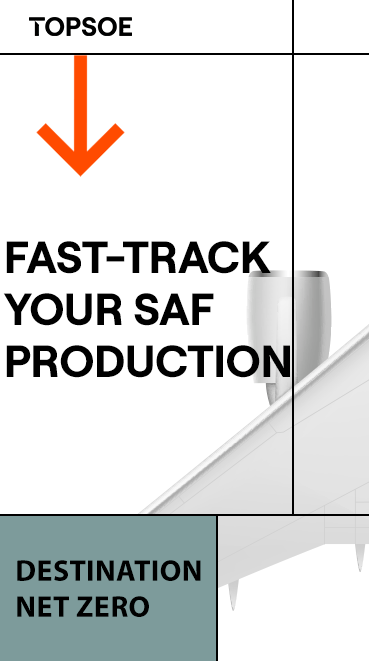Biofuel stakeholders say US treasury department’s 45Z guidance is lacking, incomplete and too little too late
- Ron Kotrba
- Jan 10
- 7 min read
Updated: Jan 11

The U.S. treasury department and Internal Revenue Service released new guidance on the clean fuels production credit known as 45Z.
Section 45Z was passed in the Inflation Reduction Act of 2022 and provides a production tax credit for clean transportation fuels based on the carbon intensity of production.
The federal government has had more than two years to develop and release substantive guidance before 45Z went into effect Jan. 1, 2025, but this initial guidance, which is essentially a notice that the department intends to propose rules in the future, comes months and months late and 10 days after the implementation date.
For months, the Iowa Renewable Fuels Association and other groups have pushed for action to establish safe-harbor guidance until a complete rule can be finalized, as the lack of rules is directly impacting the biodiesel supply chain today, IRFA noted.
45Z consolidates and replaces pre-IRA credits for biodiesel, renewable diesel and alternative fuels, and an IRA credit for sustainable aviation fuel (SAF), which expired at the end of 2024.
“Today’s announcement by the treasury department is a story of too little, too late,” said Monte Shaw, IRFA’s executive director. “This is not a final rule. This is not a safe harbor. It isn’t even a proposed rule. Putting out a notice of intent 10 days before you leave office is nothing but punting the rule down the road. The lack of transparency and certainty has left many biodiesel production facilities running at a reduced rate or not at all. The supply chain needs to know the value of the credits to resume functioning normally. If America is to achieve energy dominance, we can’t leave biofuels producers and American farmers stuck in neutral.”
Clean Fuels Alliance America noted that many domestic producers have been stymied over the past year in negotiating feedstock and fuel-offtake contracts for 2025 while waiting for guidance on the new tax credit.
“Today’s guidance begins to clarify important questions on how to calculate the credit and what fuels, feedstocks and producers are eligible,” Clean Fuels stated. “Additional information is still needed, though, to enable producers to calculate credit values.”
The guidance includes both a notice of intent to propose regulations on the 45Z credit and a notice providing the annual emissions-rate table for 45Z, which refers taxpayers to the appropriate methodologies for determining the lifecycle GHG emissions of their fuel.
For the most part, the emissions-rate table simply instructs biodiesel and renewable diesel producers to use the latest 45ZCF-GREET model to determine emissions rates, but this version has not been released yet by U.S. DOE. For SAF, it instructs SAF producers to use the 45ZCF-GREET model or the latest CORSIA-actual or CORSIA-default versions.
The treasury department said U.S. DOE will release the 45ZCF-GREET model in the coming days.
“Clean-fuel producers still need the carbon-intensity scores from the GREET model to calculate their credit values,” said Kurt Kovarik, vice president of federal affairs for Clean Fuels. “This missing information is key to enabling them to negotiate feedstock and fuel offtake agreements for the year and get back to business.”
Geoff Cooper, president and CEO of the Renewable Fuels Association, also noted that important information from the emissions-rate table remains unavailable in the new guidance, making it impossible for producers to know whether their fuel is eligible for the credit. While that information, along with a new 45Z GREET model, is expected to be released soon, today’s guidance leaves biofuel producers in limbo, he said.
Despite this industry reaction, the treasury department said its guidance provides “clarity” on issues including which entities and fuels are eligible for the credit and how taxpayers determine lifecycle emissions.
Specifically, the guidance outlines the intent by the treasury department and IRS to define key concepts and provide certain rules in a future rulemaking, including who and what fuels are eligible; guidance on a provisional emissions rate (PER); and incorporating climate-smart agriculture (CSA).
Who is eligible
The treasury department said it and IRS intend to provide that the producer of the eligible clean fuel is eligible to claim the 45Z credit.
Consistent with the statute, compressors and blenders of fuel would not be eligible.
What fuels are eligible
Under section 45Z, a fuel must be “suitable for use” as a transportation fuel.
The treasury department and IRS intend to propose that 45Z-creditable transportation fuel must itself, or when blended into a fuel mixture, have either practical or commercial fitness for use as a fuel in a highway vehicle or aircraft.
The guidance clarifies that marine fuels that are otherwise suitable for use in highway vehicles or aircraft, such as marine diesel and methanol, are also 45Z eligible.
“Specifically, this would mean that neat SAF that is blended into a fuel mixture that has practical or commercial fitness for use as a fuel would be creditable,” the department said.
Determining lifecycle emissions to calculate credit amount
The Jan. 10 guidance publishes the annual emissions-rate table that directs taxpayers to the appropriate methodologies for calculating carbon intensities for types and categories of 45Z-eligible fuels.
The table directs taxpayers to use the 45ZCF-GREET model to determine the emissions rate of non-SAF transportation fuel, and either the 45ZCF-GREET model or methodologies from the International Civil Aviation Organization for SAF.
The treasury department said taxpayers may use the PER process to obtain an emissions rate for fuel pathway and feedstock combinations not specified in the emissions-rate table once guidance is published for the PER process, which the department simply said is “expected at a later date.”
Outlining CSA practices
The treasury department intends to propose rules for incorporating the emissions benefits from CSA practices for cultivating domestic corn, soybeans and sorghum as feedstocks for SAF and non-SAF transportation fuels. These options would be available to taxpayers after the department and IRS propose regulations for 45Z, including rules for CSA, and the 45ZCF-GREET model is updated to enable calculation of the lifecycle greenhouse-gas emissions rates for CSA crops, taking into account one or more CSA practices.
In April, the treasury department established a novel pilot program to encourage CSA practices within guidance on the section 40B SAF tax credit.
The department said it has received and continues to consider substantial feedback from stakeholders on the program.
In June, USDA published a request for information requesting public input on procedures for reporting and verification of CSA practices and measurement of related emissions benefits and received substantial input from a wide array of stakeholders.
USDA is currently developing voluntary technical guidelines for CSA reporting and verification.
The treasury department said it and the IRS “will consider those guidelines in proposing rules recognizing the benefits of CSA for purposes of the section 45Z credit.”
Used cooking oil
Regarding used cooking oil (UCO) feedstocks, the treasury department and IRS said they are concerned about the mislabeling of virgin palm oil as UCO, for instance, and the uncertainty of market impacts caused by incentivizing UCO—for example, the degree to which increased UCO demand would be backfilled by virgin oils such as palm oil.
“Both of these concerns are particularly acute for imported UCO given the lack of transparency regarding the local sources,” the department said. “Due to these significant concerns about the ability to reliably distinguish between imported UCO and palm oil, and the resulting risk of crediting ineligible fuels, the treasury department and IRS are considering appropriate substantiation and recordkeeping requirements for imported UCO.”
As a result, the treasury department said pathways that use imported UCO will not be available in the 45ZCF-GREET model until the treasury department and IRS publish further guidance.
More reaction
“The advanced biofuels industry is pleased to finally receive initial guidance on 45Z credits but is deeply disappointed by the long delays that have caused uncertainty and disrupted markets,” said Michael McAdams, the executive director of the Advanced Biofuels Association. “Congress designed 45Z to propel America’s leadership in energy innovation and strengthen our energy independence, yet the prolonged rulemaking process has hindered investment and market stability. We look forward to working with the incoming Trump-Vance administration to prioritize finalizing this process swiftly. Clear, multiyear guidance is essential to stabilize markets and support the hardworking farmers and producers who fuel our economy and our future.”
Shaw added that the IRFA too looks forward to working with the incoming Trump administration and Iowa delegation to get rules in place as quickly as possible.
“45Z is the law of the land, yet biofuels producers, farmers and consumers are not able to utilize the credit,” he said.
“This long-overdue guidance is far from complete—it still lacks the critical details that are needed to help ensure that American biofuel producers and their farm partners can lead the world in clean fuel production,” said Growth Energy CEO Emily Skor. “While we appreciate the work of Secretary Vilsack to champion our issues on behalf of rural America, today’s announcement falls short of providing the information that our industry and its farm partners need, including a model for an expanded number of eligible decarbonization technologies and guidance on CSA practices. We look forward to working with the next administration to fill in the gaps left by today’s announcement and to ensure this economic opportunity for the struggling farm economy is not left on the table. Demand for low-carbon energy will continue to grow with or without us, and we need strong policy support in order to unleash the kind of investments that will position the U.S. for leadership in this market. Today’s guidance does not satisfy that need.”
Kovarik optimistically added, “We’re hopeful that today’s notice provides the necessary certainty that producers can rely on ahead of the final rules. Domestic production of biomass-based diesel has doubled since 2020, benefitting from multiyear certainty in federal tax policy. Biodiesel and renewable diesel combined now meet 9 percent of U.S. demand for distillate fuel for heavy-duty transportation needs. Clean Fuels and its member companies will carefully evaluate the guidance to ensure it provides needed certainty for all stakeholders and supports the industry’s continued growth.”
In a different tone, Cooper said, “Today’s package falls short of expectations and remains incomplete. The guidance is a potential step in the right direction, but much work remains to be done before clean-fuel producers, farmers and consumers can fully benefit from the 45Z program.”
Written comments to forthcoming proposed regulations described in section 3 of the Jan. 10 notice, the topics identified in section 4.02 of the notice, and the draft text in the appendix of the notice are being requested by the treasury department and should be submitted by April 10.
The subject line for the comments should include a reference to Notice 2025-10.
Comments may be submitted electronically via the portal at http://www.regulations.gov.
Type “IRS-2025-0002” in the search field on the regulations.gov homepage to find this notice and submit comments.






















-RKstandin.jpg)
_gif.gif)




